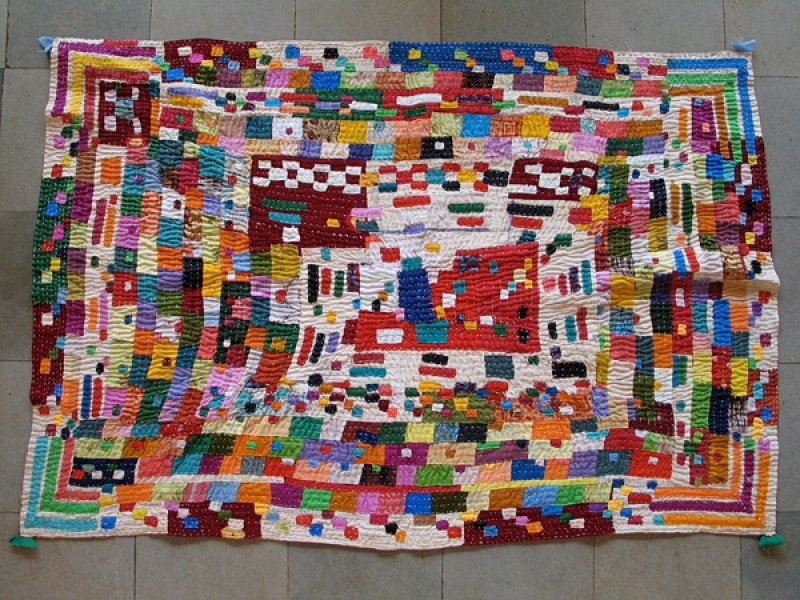The Desired Effect: African Quilts of Western India
The Siddis of western India and southern Pakistan are descendants of early African immigrants and of enslaved Africans brought to western India by the Portuguese and other groups from the sixteenth century onwards.
Based on DNA information it would appear that about 50% of the Indian Siddi population are descendants of Bantus from East Africa, while many others are descendants of Ethiopians. Although the Siddis have adopted many Indian characteristics, there are still some cultural elements that are regarded as their own and of African origin. These include the making and use of patchwork quilts, known locally as kawandi. These are made by women and used as covers, mattresses, and quilts. Kawandi are bright, colourful quilts often with haphazard or puzzle designs, although the use of blocks associated with Western-style quilts is becoming more common.
Traditionally, Siddi quilts are created for family members and used as sleeping mattresses in warm weather or as covers during the cool, damp monsoon season. Large quilts come in sizes based on one, two or more family members. A quilt for three or more persons is regarded as auspicious, as it implies a growing family with children. In addition there are small, baby-sized quilts that are often decorated with brightly coloured patches (tikeli).
Kawandi are normally made of pieces of cloth from old, worn-out clothing gathered together by the quilters from family, friends, or from items purchased at the local used-clothing markets. Some women incorporate parts of garments, such as the neckline of a child’s blouse or an old shirt (sometimes with the buttons still attached). Other women may cut the garments into small square or rectangular patches of brightly coloured cloth (tikeli). The tikeli are often placed on top of other, larger patches to create a series of layers in contrasting colours. When the quilters have enough pieces of cloth to make a quilt, a cotton sari is acquired and used as the backing for the quilt.
The final step is to sew at each corner of the quilt one or more folded square patches, which form a multi-layered triangle called a phula, or ‘flower.’ These serve no specific function, but they are regarded as essential to a properly finished or ‘dressed’ Siddi quilt. A kawandi would be regarded as ‘naked’ without the phula.

